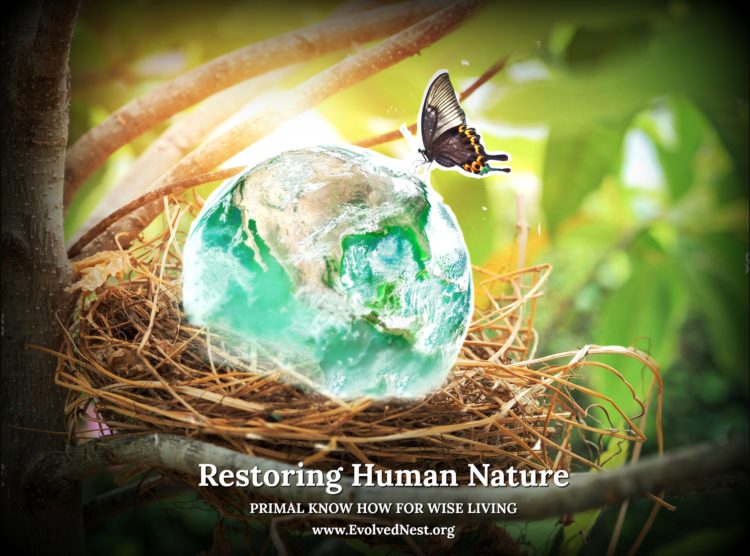Relational Disconnection As Mental Illness
Murderers are not always mentally ill according to the DSM.
We have a problem. We are raising too many males to be unempathic and oriented to their own ego enhancement, dominating others, treating others aggressively—doing great damage to the social fabric and even the future of the human species (Derber, 2013; Narvaez, 2014). But many of the characteristics of troublemakers in the USA are not considered “mental illness” by the Diagnostic and Statistical Manual of Mental Disorders (DSM), though they would be by any indigenous psychology standard.
The DSM focuses on the individual’s sense of wellbeing. As a result, psychiatry determines that “Most mass murderers are not mentally ill. Most terrorists are not mentally ill. Most rapists are not mentally ill. Most dictatorial rulers are not mentally ill… Most conspiracy theorists aren’t mentally ill” (Frances, 2017, p. 3). Narcissists, too, are free of the diagnosis of mental illness as they are not experiencing “clinically significant distress or impairment” (Frances, 2017, p. 2). Rather than being “clinically mad,” a narcissist is just “very bad” (ibid).

Indigenous psychology views things differently. Within indigenous communities, being bad for the community—harming another in any significant manner—is a sign of illness. Whether robbery, assault, or murder, harming another is believed to be rooted in relational and emotional disconnection (Ross, 2006). Consequently, justice has to do with repairing relationships—restoring respectful and caring connection—toward self, others, community, landscape, and the unseen spiritual world. Healing circles are formed to determine the best course for repairing a particular situation.
For example, a teenager who breaks a window to reach in and steal a bottle of whiskey on a kitchen table will face a long process of healing. Mere repayment or community service is insufficient to repair the relational damage done. The offender needs to understand how he has damaged the relational web of the community, including the relationship between the homeowners and their home, community members’ perception of life. For example, how safe do the homeowners feel in their home now? Are they afraid of unusual sounds or strangers? Are they thinking of moving away? How do they feel about teenagers generally? How about everyone else in the neighborhood—how have they been hurt? With face-to-face encounters in healing circles, the depth of relational injury must be expressed, explored and repaired. “Unless [the offender] leaves the process with a completely different understanding of the damage, he has not taken responsibility in any meaningful way—or even understood his own crime. Until he does, he has little incentive to change, and the personal empathy that is necessary to inspire change has not been created” (Ross, 2006, p. xvii).
Typically in non-indigenous systems, offenders are systematically punished with separation from the community they have harmed. Instead of learning to reconnect respectfully to the community, they harden their disconnected ways in jails and prisons. Meanwhile, the harm to the community continues to ripple and reverberate, undermining feelings of trustful connection.
The focus of restorative justice within indigenous communities is on process and thoroughness rather than products and speed, on relationship repair rather than repayment of “stuff.” The importation of “restorative justice” into non-indigenous communities has often taken the latter, product, speed, and stuff approach. Market-oriented practices hampered what was a family and community relational approach.
The DSM grew out of an American society built on individualism, which emerged from historical shifts such as (a) disrupted European communities from the enclosures (privatization of common lands) occurring widely in the 16th and 17th centuries that forced people off the land turning them into rootless migrants (Polanyi, 2001); and from (b) the rise of mercantilism and the ‘self-made man’ who necessarily divorced himself from community ties responsibility to make a buck (Hyde, 1983), an attitude that schooling also emphasized, including higher education which shaped those creating the DSM. Thus, assessing disorders in individuals alone seemed logical to an increasingly relationally disconnected people.
The DSM is missing something important if they treat as healthy individuals who are destructive to their neighborhoods, communities, nations, and planet. There is something severely wrong about treating folks running amok as “normal.” It is certainly a sign of shifted baselines for what we expect humans to be like, and one of the causes of the planetary destruction underway (Kidner, 2001; Narvaez & Witherington, in press).
(Part Two: Raising Men to Be Disconnected)
References
Derber, C. (2013). Sociopathic society: A people’s sociology of the United States. Boulder, CO: Paradigm Press.
Frances, A. (2017). Twilight of American sanity: A psychiatrist analyzes the age of Trump. New York: William Morrow.
Hyde, L. (1983). The gift: Imagination and the erotic life of property. New York: Vintage.
Kidner, D. W. (2001). Nature and psyche: Radical environmentalism and the politics of subjectivity. Albany: State University of New York.
Narvaez, D. (2014). Neurobiology and the development of human morality: Evolution, culture and wisdom. New York, NY: W.W. Norton.
Narvaez, D., & Witherington, D. (in press). Getting to baselines for human nature, development and wellbeing. Archives of Scientific Psychology
Polanyi, K. (2001). The great transformation: The political and economic origins of our time, 2nd ed. Boston: Beacon Press.
Ross, R. (2006). Returning to the teachings: Exploring aboriginal justice. Toronto: Penguin Canada
Photo Shutterstock/Lee-McGrath

